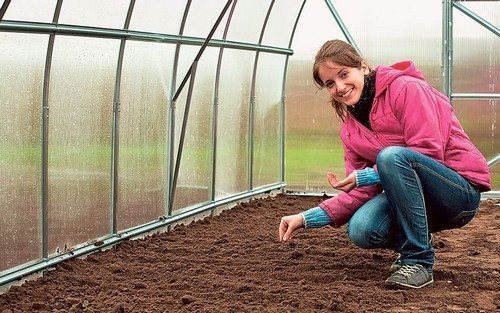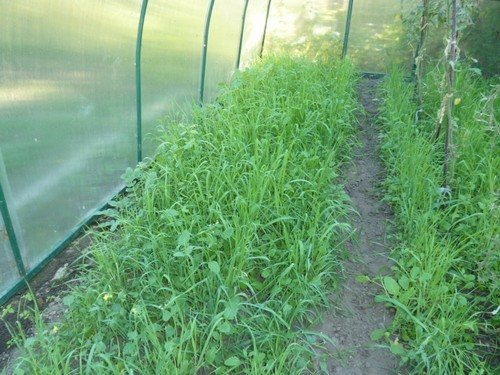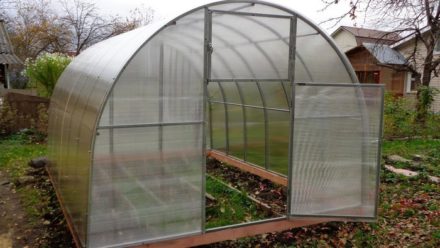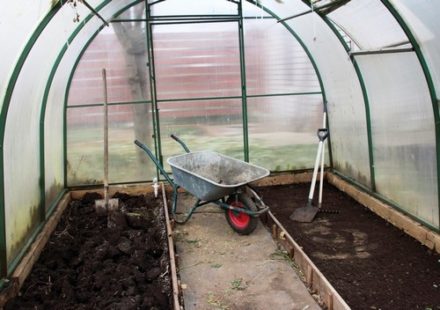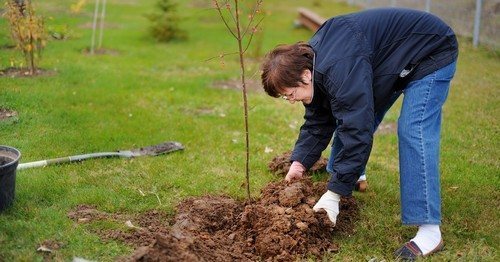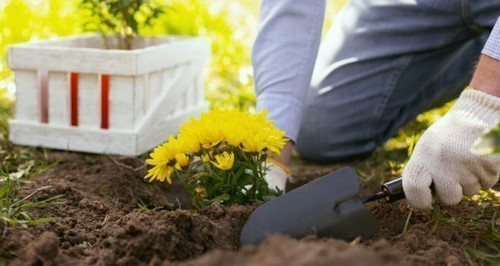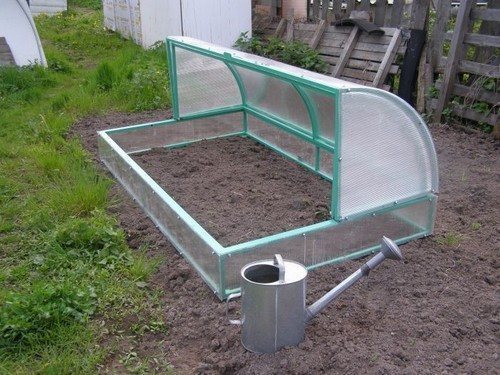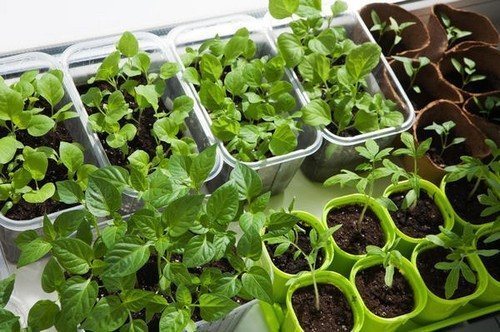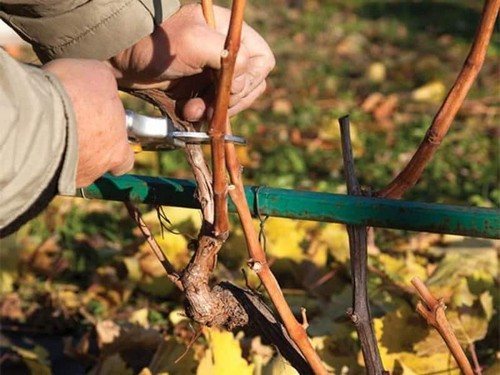With the end of the summer season, work on the plot does not end. It is necessary to prepare the site for the next season. Polycarbonate greenhouses require special attention.

Regardless of whether the greenhouse will be reused in winter or mothballed until next year, it must be properly processed. In order for the greenhouse to be ready for subsequent planting work, you need to know how to carry out this procedure correctly and what tools may be needed for this.
The purpose of autumn greenhouse treatment
Any structure requires maintenance. Despite the fact that greenhouse structures made of polycarbonate are quite durable, both metal and polycarbonate wear out over long periods of use. Rain, hail, and wind damage the structure, and sudden temperature changes deform the material.
The greenhouse creates favorable conditions not only for the cultivation of plants, but also for the reproduction of microbes, fungi, and pest larvae. Pathogenic pathogens settle on the ground and elements of the structure. During the operation of the greenhouse, the soil is depleted, especially if the same crops were grown.
Thus, autumn treatment of the greenhouse performs several functions:
- destroys pathogenic microorganisms, larvae of harmful insects, protecting future plantings from diseases;
- increases soil fertility;
- extends the service life of the greenhouse structure.
All these procedures must be carried out in the fall.In spring, many insects move from the larval stage to adulthood, and it becomes much more difficult to fight them. In addition, chemicals used when cleaning structural elements may accidentally end up on the soil. If disinfection was carried out in the fall, then during the winter the remaining chemicals will have time to decompose, and the crops will remain safe. And there is not always enough time to carry out treatment in the spring.
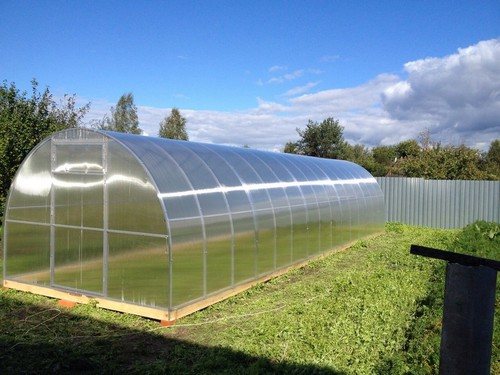
Processing of greenhouse structure
It is advisable to begin preparing the greenhouse for the next season immediately after the end of the harvest. It is better to carry out procedures in dry, sunny weather, since it will take some time for the treated removable structures to dry. Greenhouse care consists of cleaning the interior and disinfecting the elements of the structure.
Cleaning the premises and household equipment
Autumn cleaning of the greenhouse begins with the removal of all plant debris: tops, remaining fruits, weeds.
In addition to this, a number of other activities will need to be carried out:
- pull out trellises, supports, pegs;
- remove garter material;
- take out gardening tools;
- wind up the watering hoses;
- dig up the soil with a pitchfork to remove the remaining plant roots;
- remove paths by sweeping and hosing down with water.
All biomaterial must be burned, as pest larvae, pathogenic fungi, and spores may remain on it. It is also recommended to burn consumables: ropes, wooden pegs used for tying up climbing plants.
Garden tools, pots, and water containers are washed and treated with any fungicide.
After finishing the cleaning, the greenhouse is left to ventilate.
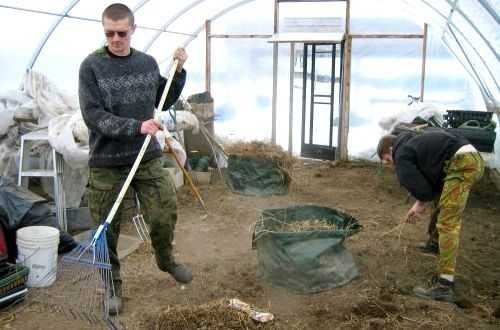
Disinfection of greenhouse structure elements
The next stage of greenhouse care is preventive disinfection of the frame and polycarbonate covering. This procedure rids the structure of the pathogenic environment, protecting the future harvest.
The metal frame is cleaned of rust and coated with an anti-corrosion compound. Rotten elements in a wooden profile are replaced.
The surface of the frame and the polycarbonate coating on both sides is washed with a saturated solution of laundry soap. To do this, grate 1/3 of the soap and dissolve it in a bucket of warm water.
When processing a greenhouse room, you must adhere to some rules:
- Clean the polycarbonate surface only with soft cloths or washcloths. Do not use hard brushes or burlap.
- Fixed structures are washed using soft brushes with long handles.
- You can use a toothbrush to clean joints, gaps, and small parts.
- The washed metal profile is wiped dry and repainted.
- The wooden structure is treated with an antiseptic or slaked lime.
- Wash off the applied soap solution with a cloth soaked in clean water, repeating the procedure twice.
To disinfect the greenhouse structure, you can use a steam generator. Polycarbonate can withstand elevated temperatures, so hot steam treatment will not harm it. The surface of the walls and ceiling is disinfected using a soft nozzle, and a crevice is used for the frame.
The washed area must be thoroughly dried. To do this, doors, windows, and ventilation holes are left open for 2 days.If it is possible to use forced ventilation, one day is enough for drying.
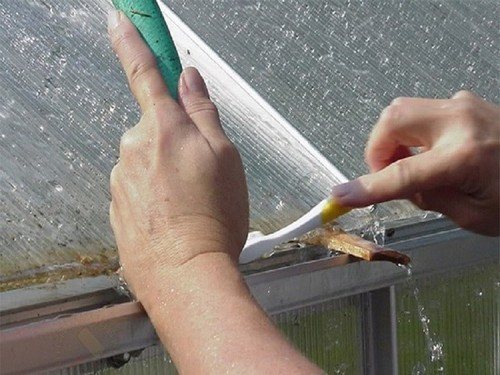
Disinfection of a greenhouse with chemicals
Complete disinfection of a polycarbonate greenhouse consists not only of treating the structure, but also disinfecting the soil.
For sanitary treatment of soil use:
- sulfur bomb;
- cutting sulfur;
- copper sulfate;
- potassium permanganate;
- bleach;
- Bordeaux mixture.
Before starting disinfection, the top layer of soil should be replaced. There are practically no nutritional elements in it, but the concentration of fungi, bacteria, and larvae of harmful insects is considerable.
Use a shovel to remove a 5-10 cm layer of soil, replacing it with fresh soil. Then they begin disinfection.
Sulfur checkers
The most common method of disinfecting polycarbonate structures is fumigation with sulfur bombs.
Sulfur bombs are tablets with an active substance (sulfur) and a wick for ignition. The number of tablets used depends on the size of the greenhouse. For fumigation 10 m3 One checker weighing 600 g is enough.
Burning sulfur releases toxic substances, so the procedure must be carried out in a gas mask.
The fumigation process goes as follows:
- All cracks and holes are hermetically sealed.
- The internal surfaces of the greenhouse are moistened with water.
- The tablets are placed on metal stands.
- The checkers are set on fire, starting from the far edge of the room towards the exit.
- When leaving, close the doors tightly.
The checker burns for 60-70 minutes, but you cannot enter the room for 3 days. After this time, the greenhouse is opened for ventilation.
The effectiveness of the method is explained by the fact that smoke is able to penetrate into the most inaccessible places, destroying fungi and bacteria.
When igniting sulfur bombs in greenhouses with a metal profile, all elements must be impregnated with a protective polymer layer, otherwise fumigation will lead to corrosion.
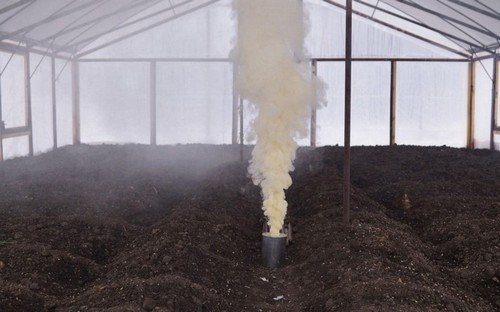
Cutting sulfur
The use of cuttings of sulfur is also unsafe for humans, as is the treatment with sulfur bombs. Therefore, before disinfection, you should use personal protective equipment.
Before use, sulfur is crushed by mixing with charcoal. The resulting mixture is poured into metal containers and placed around the room (0.5 kg of sulfur for every 5 m3).
Burning sulfur is left inside the greenhouse for 5-6 days, then ventilated for 15-20 days. No work is carried out in the greenhouse during this period.
Bleaching powder
The soil, frame, polycarbonate surface, garden tools can be treated with bleach (400 g) dissolved in water (10 l). The mixture is thoroughly stirred, leaving to infuse for 4-5 hours.
Before use, the top layer of the mixture is poured into a spray bottle, then sprayed over the soil and the inner surface of the greenhouse. The remaining sediment is used to whiten the wooden frame elements. After treatment, the room is closed. After 2 days, the room is opened for ventilation for 2-4 days.
Copper sulfate
One of the effective fungicides that helps in the fight against diseases and harmful insects is copper sulfate. For treatment, the substance (50 g) is diluted with water (5 l). The resulting suspension is used to disinfect the soil. By adding laundry soap to the solution, the frame and covering of the greenhouse are disinfected.
When working with copper sulfate, you should adhere to certain rules:
- treat only with freshly prepared solution;
- dilute the mixture in a non-metallic container;
- work with the drug wearing gloves and a mask.
Copper sulfate not only has an antiseptic effect, but also replenishes copper deficiency in the soil.
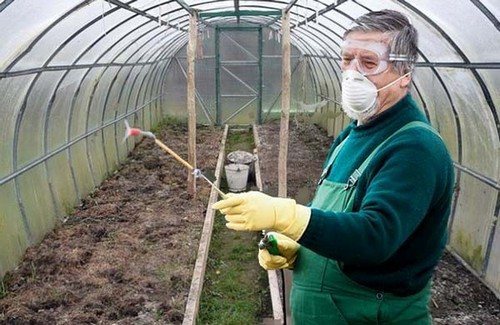
Bordeaux mixture and potassium permanganate
The Bordeaux mixture contains copper sulfate and lime. Each element is diluted separately, then poured into a spray bottle, where it is thoroughly mixed. The process of preparing Bordeaux mixture:
- Mix copper sulfate (100 g) and warm water (1 l).
- Lime (150 g) is quenched with boiling water (1.5 l).
- Both solutions are thoroughly stirred, water is added until the volume reaches 5 liters.
- Pour slaked lime into a spray bottle, then vitriol and stir.
The resulting mixture is sprayed onto the surface of the greenhouse and the soil. The room remains closed for 2 days after treatment, then opens for ventilation for 2-3 days.
Potassium permanganate is considered a good antiseptic. Disinfect the soil with a bright pink solution, which is sprayed with a spray bottle. The solution is applied to the walls and frame using a brush.
Soil feeding and greenhouse conservation
Preparation of the greenhouse for winter does not end with disinfection. It will be necessary to restore soil fertility by feeding it with organic matter. Manure, peat, compost, and humus are used as organic fertilizer.
The organic mixture is scattered over the surface of the soil and dug up. After this, the soil is treated with biological products.
After processing the greenhouse, it needs to be prepared for wintering.To strengthen the structure, special supports are used, one end of which rests against the arc of the frame, and the other against the ground. This prevents the structure from collapsing in winter due to a significant thickness of snow or in the event of strong winds.
Preparing a polycarbonate greenhouse is a labor-intensive procedure and takes several days. But carrying out this procedure will help destroy pathogenic microorganisms, protect future plantings from diseases and pests and obtain a rich harvest.


